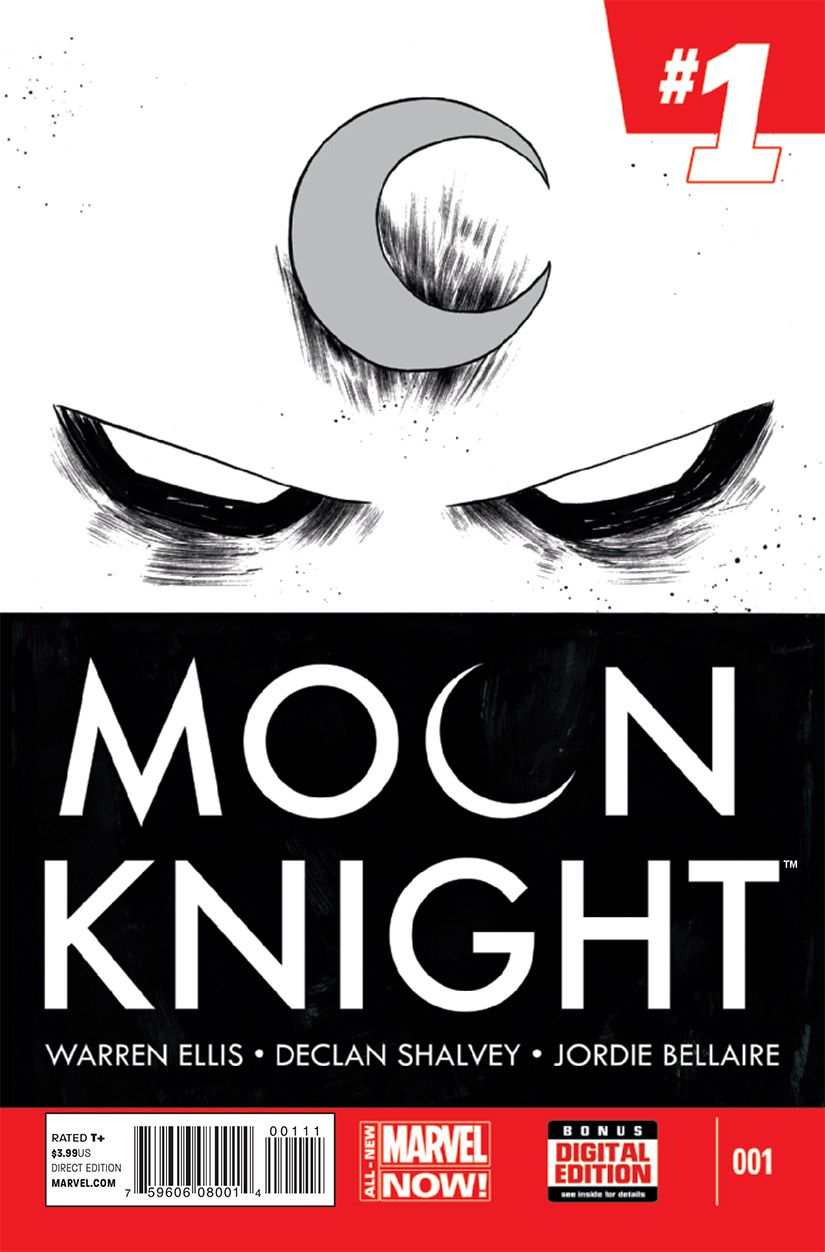In "Moon Knight" #1, writer Warren Ellis, artist Declan Shalvey, colorist Jordie Bellaire and letterer Chris Eliopoulos give readers everything they need to know to step into the night and begin an adventure alongside Marvel's most fearsomely unbalanced defender. More than once in this issue, Moon Knight is described as crazy or insane, but that doesn't stop him at all.
Ellis' story sets out to establish a new status quo for Moon Knight, but this issue doesn't provide enough range to define for the reader if this apparent change is for one case, one issue or more. After all, the guy is crazy, so he can do whatever he wants without solid reasoning. Ellis gives readers an explanation for the new attire, to a certain point, but doesn't completely dismiss anything readers have seen before. Beyond that, the writer doesn't lay out everything from the start. Instead, he presents just enough to make Moon Knight a captivatingly capable character with no shortage of resources and more than enough ability to do what needs to be done. Ellis bookends the adventure of the book with analyses of Moon Knight's personality from two different angles, processing the information as we all do in the modern technological era: hearsay becomes fact, perceived fact becomes reality and reality continues to slip away, unachievable and fluid. In a comic book where the titular character is crazy and may or may not suffer from dissociative identity disorder, Ellis can throw ideas at the theoretical wall and see what sticks -- or at least, which pieces artist Declan Shalvey pulls down and plays with.
Shalvey doesn't simply draw pictures to match Ellis' words, but has as much of a hand in crafting Moon Knight's first adventure back in New York as Ellis. The character appears on a crime scene in the Shalvey-designed white suit and shoes, inspecting the area for clues as a "concerned citizen" helping out the NYPD and Detective Flint. Shalvey's use of framing, angle, gesture and expression give the reader all the information worth knowing in every panel. Without ever seeing his face through the mask, Shalvey is able to project Moon Knight's confidence and concern, his studiousness and determination. From the opening scene, the artist makes it quite clear he's going to make a mark on this character as one of the most memorable Moon Knight artists of all time.
The imagery doesn't simply end with Shalvey (but it certainly could, as the washes he employs would be mesmerizing and haunting all by themselves). Jordie Bellaire's colors are simply splendid -- everything this comic and Shalvey's art needs to become extraordinary. Bellaire's colors smartly enhance Shalvey's wash work, transforming the appearance of "Moon Knight" #1 into a captivating experience. It is also worth noting that the type in the word balloons is in mixed case, which is more standard for the Ultimate Universe than the standard Marvel Universe. Chris Eliopoulos makes one exception in this issue, for one word balloon. That exception is both dynamic in appearance and integral in the story.
While I'm not ready to proclaim "Moon Knight" #1 to be this year's "Hawkeye," this is a magnificent debut issue, which raises many more questions asked than answers. Ellis gives readers plenty of incentive to return for more action and intrigue next issue, and his take on the character fits right between Daredevil and Punisher. The debut issue gives readers exactly enough action and mystery translated through brilliant art to hook them until the next installment. With lines like, "I died before," Ellis proves a sliver of humor hiding under the cowl, but not an overwhelming amount. That humor, combined with the ingenuity and intelligence of Khonshu's disciple maes for a compelling and intriguing "all-new" Moon Knight. Thanks to gorgeous art and smart storytelling, "Moon Knight" #1 is an incredibly strong debut.

